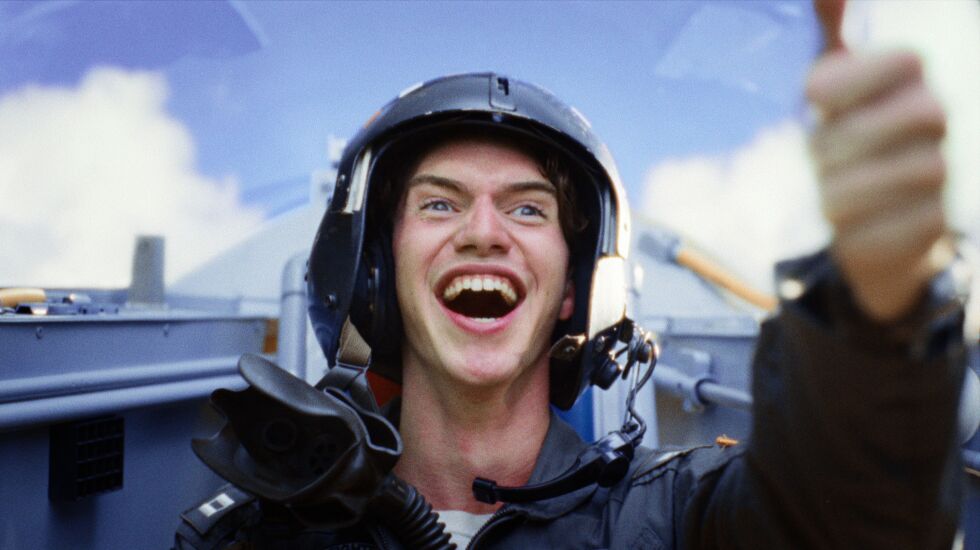
We’ve seen hundreds of TV ads through the decades featuring the promise of something spectacular, followed by the fine print, fast-talking disclaimer listing possible serious side effects, or letting us know only qualified buyers are eligible, or those stunts were performed by professionals on a closed course.
This is the story of the company that neglected to attach such a disclaimer to an ad in the 1990s — and wound up facing the possibility they’d have to pony up a Harrier fighter jet worth more than $20 million to one wily consumer. Told in a suitably breezy style, the four-part Netflix documentary series “Pepsi, Where’s My Jet?” uses a mix of archival footage, re-creations, clever edits and new interviews to revisit the story of one of the most astonishing eff-ups in the history of TV advertising. Director Andrew Renzi (“The Curse of Von Dutch: A Brand to Die For”) captures the zeitgeist of 1990s pop culture while treating this material like a non-fiction Adam McKay film, filled with popping visuals, colorful real-life characters and solidly researched intel.
Celebrity endorsements are as old as modern advertising, but as the series points out, Pepsi was taking it to a whole new level in the late 1980s and 1990s. David Bowie, Madonna and Michael Jackson starred in TV ads, and Cindy Crawford was the centerpiece of an iconic Super Bowl spot. (“Every Halloween on Instagram, I see at least 30 people who go as me from that Pepsi commercial,” says Crawford.)
In the mid-1990s, PepsiCo came up with an ingenious idea: Customers could accumulate “Pepsi Points” and use them to buy Pepsi merchandise that would also serve to further publicize … Pepsi! A 1996 ad depicted a teenage Tom Cruise knockoff starting his day wearing a Pepsi T-shirt (75 Pepsi Points), a leather jacket (1,450 Pepsi Points) and shades (175 points) as a voiceover intoned, “The more Pepsi you drink, the more great stuff you’re going to get.” The kicker: a shot of the kid arriving at school in a jet, with the graphic saying, “Harrier Fighter, 7,000,000 Pepsi Points.”
Cut to then 20-year-old community college student John Leonard, who saw the ad, realized Pepsi hadn’t included any kind of disclaimer saying it wasn’t actually offering an AV-8 Harrier II jet as a prize — and started dreaming up a game plan to accumulate the necessary Pepsi Points. After discovering one could purchase Pepsi Points for 10 cents apiece and partnering with the wonderfully eccentric, stick-it-to-man hippie entrepreneur Todd Hoffman, the battle was on. Leonard and Hoffman sent Pepsi a check for $700,000 to cover the cost of 7 million Pepsi Points and said they would await details on delivery of the jet — and the higher-ups at Pepsi collectively said, “Oh, BLEEP!” before mounting their defense.
Pepsi didn’t help its case by editing the ad to change the “offer” to 700 million Pepsi Points and then adding a disclaimer saying, “Just Kidding.” A young law student named Michael Avenatti joined Leonard’s team and marshaled a publicity blitz painting Leonard for what he was: a likable kid with a crazy dream. Things got so crazy, a Pentagon spokesman addressed the issue, saying the Harrier jet had not been demilitarized, so it couldn’t be sold to the public.
Did John Leonard ever get his jet? What do you think? Regardless of whether Leonard’s quixotic quest resulted in a financial jackpot, the case of Leonard vs. PepsiCo is in the law books and, we’re told, has become a critical case in understanding the boundaries for contract law.
My guess is it can be summed up thusly: ALWAYS INCLUDE A DISCLAIMER, NO MATTER HOW RIDICULOUS YOUR AD.







